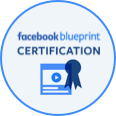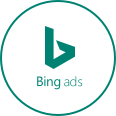When spring arrives, there are certain changes that we’ve come to expect. As we speak, birds are returning from their winter homes. Flowers have begun to bloom. And of course, Google is almost inevitably preparing to release its latest Penguin update. How on earth should webmasters be preparing for this? Softline Solutions did some investigation and came to a few important realizations.
It’s true: an unexpected but extremely important part of search engine optimization today is knowing how to avoid and, if necessary, recover from Google penalties. While some may think that only those with bad intentions and black hat SEO practices have anything to fear when the latest Penguin update is released, that is unfortunately not necessarily the case. At first glance, in fact, it may appear to the untrained eye that Google’s choices of when to penalize are arbitrary or, worse, motivated by financial gain. The good news, however, is that a recent study on webmaster responses to penalization revealed just how webmasters should act versus how they do act in response to Penguin penalties.
Here are 3 main takeaways from the study:
1) The behavior of sites penalized by Google tends to differ from the behavior of other domains.
2) Conspiracy theories about Google merely trying to trick webmasters into using AdWords seem to be unfounded.
3) Penalized sites CAN make a full recovery, with the right practices.
Investigation: Penalized Domains Vs. Those Not Penalized
The study first gathered a list of 100 domains that had been penalized by Penguin 2.0 in 2013. Then, in order to establish a control group to which the penalized sites would be compared, 100 non-penalized sites ranking in the top ten for the same primary keywords were also examined. In addition, in order to assess whether there was any correlation between penalization and the subsequent choice to use AdWords, the study also retrieved paid media data from the months that surrounded each domain’s downgrade, both before and after a domain was penalized. Finally, the investigators analyzed the results and were thus able to see how the penalized sites did indeed behave differently from those that were ultimately not penalized.
How Penalized Domains Should Respond Vs. How they Do Respond
As webmasters should be aware, after each Penguin 2.0 update, they are required to disavow or, preferably, remove bad links. Responding to a penalty by actually adding more links to the profile is certainly not the right response. Surprisingly, however, doing so was found to be a more common response on the part of penalized webmasters than actual link removal. The explanation seems to be that some webmasters believed that their loss in rankings was due to having too few links instead of being due to not removing the bogus links.
Overall, the behavior of penalized websites was unpredictable as compared to the more rational behavior of the control group. The study reveals, however, that webmasters also may have disavowed links instead of removing them, as examiners did not have access to that particular information as part of the investigation.
No Evidence of an AdWords Conspiracy
While it is tempting to believe that Penguin penalties are just a Google conspiracy to get more sites to advertise on AdWords, in reality, the investigation discovered that it was actually the sites that had not been penalized that were much more likely to join AdWords. In fact, among the domains that had not been advertisers before Penguin 2.0, 10% of those not penalized ended up becoming AdWords advertisers, while, on the other hand, a mere 4% of the penalized sites did.
Further, domains that were unaffected by Penguin 2.0 had almost an 80% larger increase in ad-spending compared to those who had been penalized. While it could certainly always be argued that Google’s projection for increased future ad revenue could come about due to better search results, the investigation found no evidence that Google’s release of updates such as Penguin 2.0 were financially motivated.
Penguin Doesn’t Have to Mean Doom and Gloom
The study also showed that sites hit by Penguin were generally capable of recovering traffic afterward. In fact, it took less than six months for 1 in 4 penalized domains to return to or even exceed their previous traffic. Data from the investigation implied that link removal could have played a role in the recovery, although some companies removing links may have also disavowed links as well as known how to fix other site issues – while other sites may have seen removal as a futile effort and made a deliberate choice not to do so.
What Webmasters Can Do Now
There’s no reason to wait around when the arrival of an update feels inevitable, and it’s never safe to assume your company would be ready to respond at a moment’s notice in the event that it ends up being penalized. Don’t waste time obsessing over conspiracy theories about AdWords – especially when competitors who rely most heavily on AdWords likely do so because they are financially at such a large disadvantage to begin with. Instead of even thinking about responding to possible penalties by increasing the number of links, webmasters should act by removing or disavowing bad links now. In short, the best thing to do now is to get prepared, get clean, and use organic, healthy tactics to improve your rankings.










